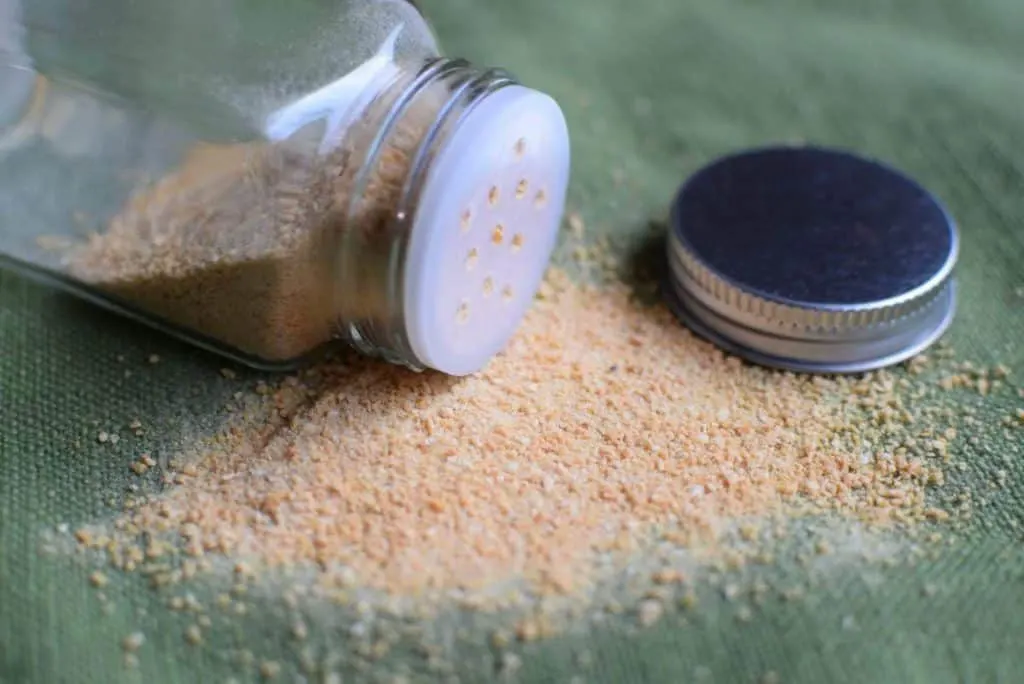
Ginger is something that I use almost daily in my kitchen. I don’t know what I go through more of – garlic or ginger.
Whether it’s chopped up in my cooking, shredded into something that I’m fermenting, or powdered and made into tea, I’ve always got a little bit of fresh ginger on hand.
I prefer to use fresh ginger for most of my cooking, but for some things, powdered ginger works better.
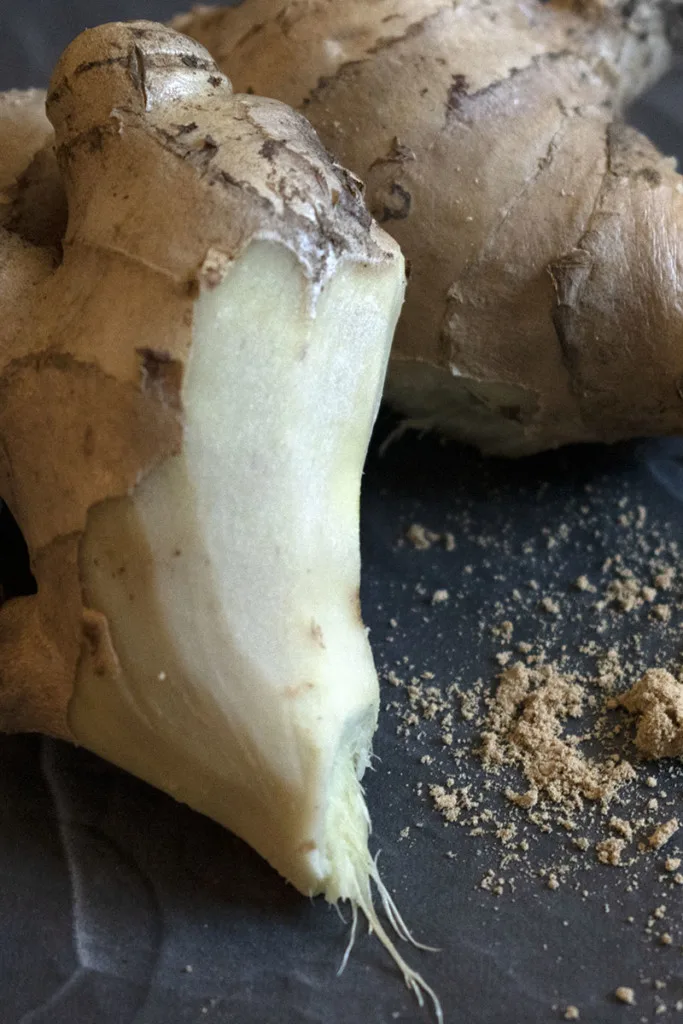
Baking recipes that call for ginger usually rely on the powdered variety. And while you can boil finely chopped ginger for tea, I find that powdered is easier.
Raw ginger is very spicy and powerful, and some folks find it upsets their stomach, to make it more palatable you can use powdered ginger instead.
As with most herbs and spices, the dried version is much more concentrated in flavor.
You can generally substitute a third of powdered ginger in a recipe that calls for fresh ginger. An example would be one teaspoon of powdered ginger in a recipe that calls for one tablespoon of fresh ginger.
In this post, we’re going to learn how to make powdered ginger together. I’m also going to share one of my favorite ways to use it in the end. It’s easy to do, so let’s get started.
Always select the freshest ginger you can find. Check the ends where it has been broken off to be sure there isn’t any mold or soft spots. One or two small spots are fine and can be cut away.
Peel
It’s important to peel all of the skin off of the ginger for the best flavor. The easiest way to do this is to break apart the ginger so that there aren’t any knobs still connected, and peel each piece individually.
After you have peeled all of the knobs, give the ginger a rinse with cold water in a colander, and pat your ginger dry.
Cut
Yes, you can use a food processor or a hand chopper to cut up the ginger, but honestly, by the time you get the equipment out and set it up, you could be halfway through cutting it up by hand.
Using a good sharp kitchen knife doesn’t take much longer. Ginger has long fibrous strings growing through it, and I find using a kitchen knife just works better at cutting through the fibers, and makes less of a mess.
Cut your ginger into thin slices or chunks. You want all of your pieces to be relatively the same size, so they dry at the same rate. Lay them all out on a pan lined with parchment paper. You want to make sure the pieces aren’t stuck together and are spread out evenly and not touching.
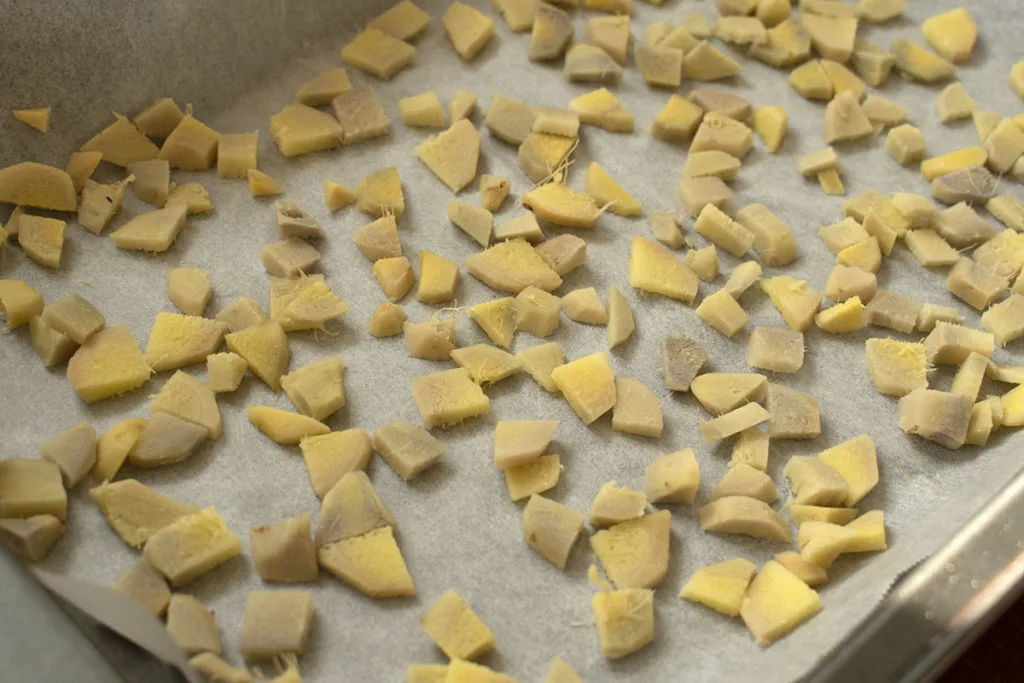
Dry
Ginger is pretty porous, so it doesn’t take nearly as long to dry as things like garlic or onions. Using a dehydrator for this task is a bit of overkill. Save it for dried fruit or something. For powdered ginger, your oven will do just fine.
Set the oven to the lowest setting it has – for most ovens, that’s 170F.
Place the pan in the oven on the highest rack.
Your house is going to smell wonderful, and everyone is going to think you are baking something delicious. Technically, you are.
Check the ginger about an hour into the drying process to see if any pieces are drying faster than the others. If so, you can check back sooner and pull those pieces out.
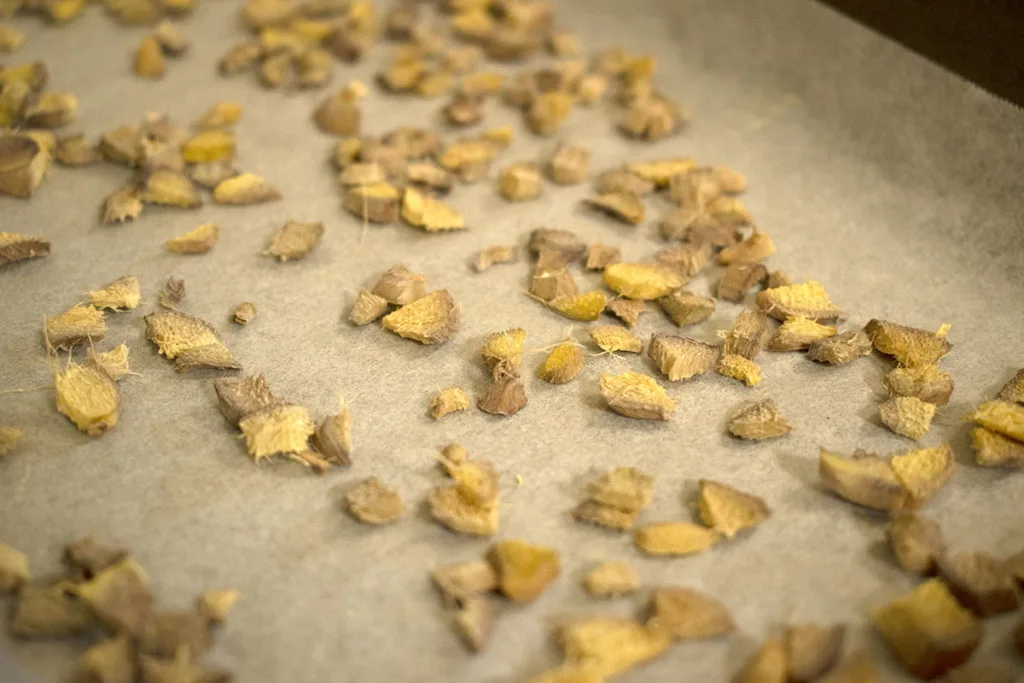
After your initial glance, check again another hour later. The ginger should be dehydrated by then. If it isn’t, check every fifteen minutes until it’s dry.
The ginger will be dry and brittle, easily snapped in half.
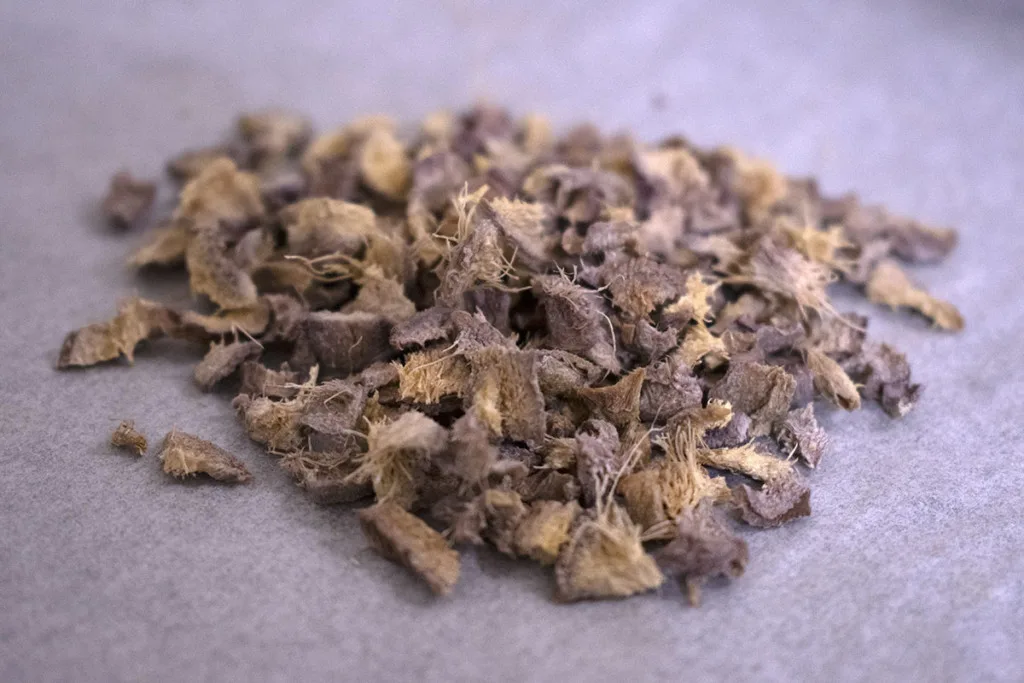
Grind
To grind your ginger, a small electric blade coffee grinder works great. A word of caution – you don’t want to use the same coffee grinder that you use to grind your coffee. While ginger in your coffee might be quite good, the oils from the coffee will flavor your ginger too.
I have an older coffee grinder that I keep on hand specifically for grinding dried herbs and spices. I always clean it immediately after grinding something by running a ½ cup of uncooked white rice through it. This cleans out any leftover traces of the herbs. I finish by brushing out all of the nooks and crannies and wiping it down with a damp cloth.
Otherwise, a blender works well, or if you want to keep it lo-tech, so does a mortar and pestle. Although the latter requires considerably more elbow grease.
I started out with roughly a quarter of a pound of fresh ginger, and it left me with about a ¼ cup of powdered ginger. To maintain the flavor, store your ginger in an airtight container.
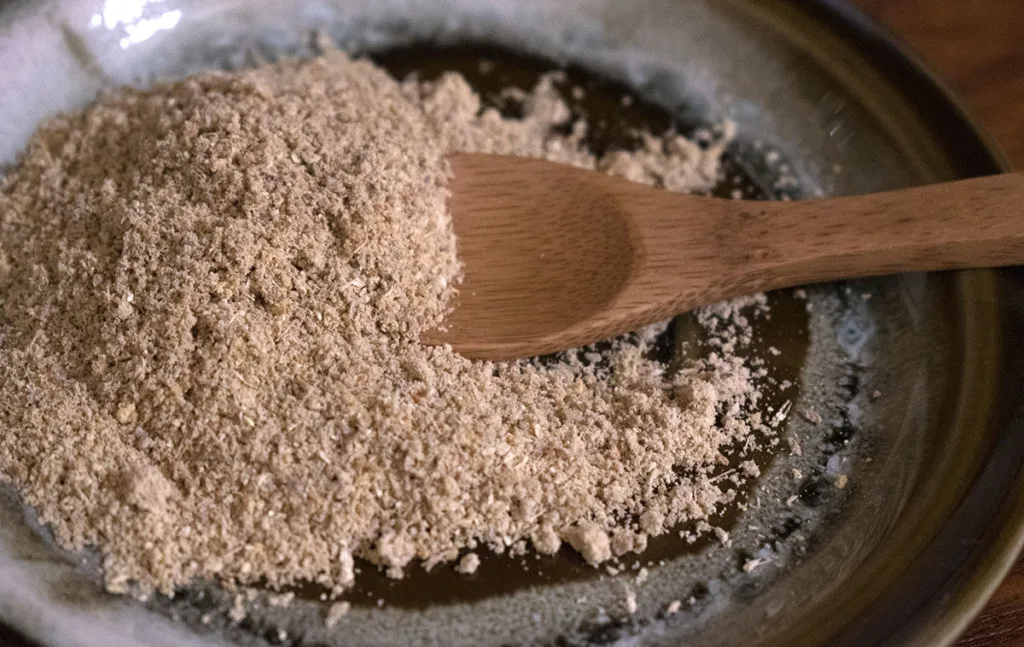
I think you’ll be quite pleased with the flavor difference from the powdered ginger you make and the stuff you can get at the store. This is going to take your gingersnaps to a whole other level!
Ginger is well known for its many health benefits and has long been used in traditional medicine.
Naturally, eating ginger every day is something we should all do. Luckily, there are so many delicious options for adding a little ginger into your diet.
My all-time favorite ginger recipe is Golden Milk. This is my favorite pre-bedtime beverage. It’s warm and soothing and never fails to send me straight to dreamland.
The key ingredients to any golden milk recipe are turmeric (hence where the ‘golden’ comes from) and ginger. Both of these spices are well known for their anti-inflammatory and digestive benefits. Mix in a few other spices with non-dairy milk, and you’ve got a warm, creamy cuppa perfect for sipping and winding down from a long day.
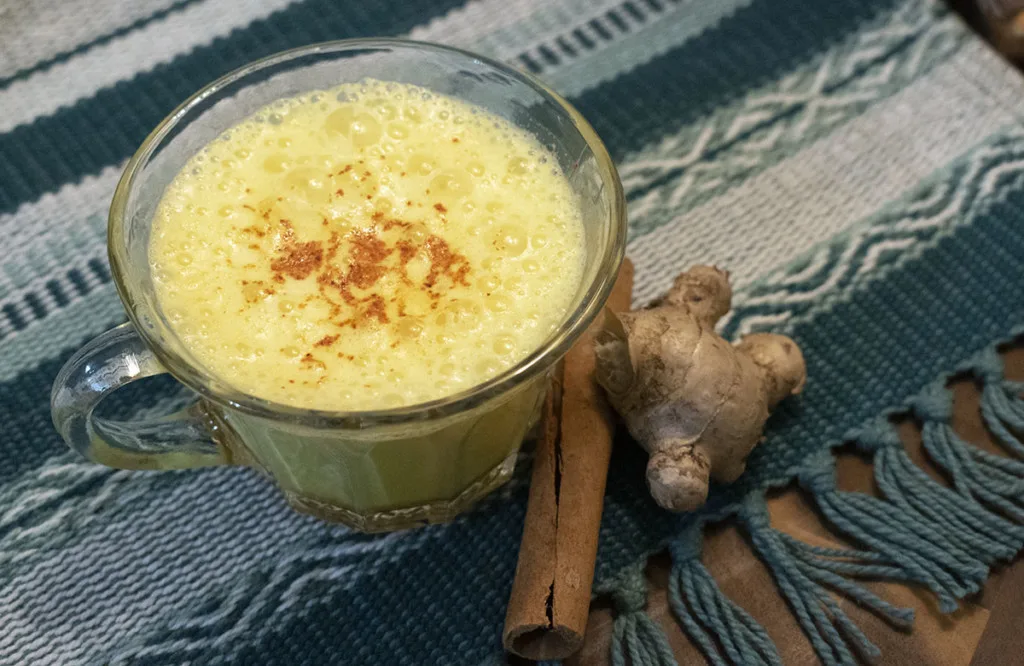
Tracey’s Golden Milk Tea
Ingredients
- 1 cup of coconut milk – a note: while you can use plain milk, my stomach prefers non-dairy milk right before bed; almond, soy, or oat milk work well too.
- ¼ teaspoon ground turmeric
- ¼ teaspoon powdered ginger
- 1/8 teaspoon of cinnamon
- A pinch of cayenne pepper
- A pinch of black pepper
- 2 teaspoons of maple syrup or honey
In a small saucepan, add in the milk and all the ingredients except for the maple syrup or honey. Over med-low heat, warm the mixture whisking it until it’s frothy, and steam is rising from it. Stir in the maple syrup or honey and pour it into a mug. I like to finish it with a little garnish of cayenne pepper.
Golden milk is best enjoyed while wearing pajamas and reading a good book!

Get the famous Rural Sprout newsletter delivered to your inbox.
Including Sunday musings from our editor, Tracey, as well as “What’s Up Wednesday” our roundup of what’s in season and new article updates and alerts.


